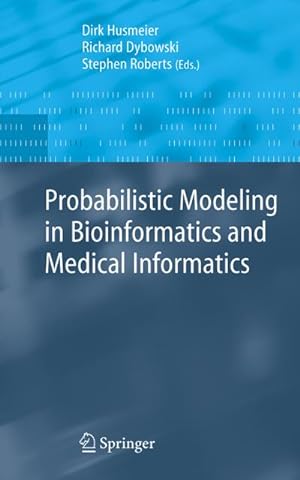Part I Probabilistic Modelling 1 A Leisurely Look at Statistical Inference 2 Introduction to Learning Bayesian Networks from Data 3 A Casual View of Multi-Layer Perceptrons as Probability Models Part II Bioinformatics 4 Introduction to Statistical Phylogenetics 5 Detecting Recombination in DNA Sequence Alignments 6 RNA-Based Phylogenetic Methods 7 Statistical Methods in Microarray Gene Expression Data Analysis 8 Inferring Genetic Regulatory Networks from Microarray Experiments with Bayesian Networks 9 Modeling Genetic Regulatory Networks using Gene Expression Profling and State Space Models Part III Medical Informatics 10 An Anthology of Probabilistic Models for Medical Informatics 11 Bayesian Analysis of Population Pharmacokinetic/Pharmacodynamic Models 12 Assessing the Effectiveness of Bayesian Feature Selection 13 Bayes Consistent Classification of EEG Data by Approximate Marginalisation 14 Ensemble Hidden Markov Models with Extended Observation Densities for Biosignal Analysis 15 A Probabilistic Network for Fusion of Data and Knowledge in Clinical Microbiology 16 Software for Probability Models in Medical Informatics A Conventions and Notation Index
From the reviews:
"This book is a collection of chapters describing methods of statistical analysis of medical and biological data, with a focus on mathematical descriptions and implementing algorithms. ... It will be particularly useful for those who are interested in a better understanding of artificial neutral networks ... . Generally, it is a refreshing book for a statistician ... giving a good description of a wide variety of complex models." (Natalia Bochkina, Significance, Vol. 3 (3), 2006)
"This book covers recent advances in the use of probabilistic models in computational molecular biology, bioinformatics and biomedicine. ... A self-contained chapter on statistical inference is included as well as a discussion of Bayesian networks as a common and unifying framework for probabilistic modeling. The book has been written for researchers and students in statistics, informatics, and biological sciences ... . Finally, an appendix explains the conventions and notation used throughout the book." (T. Postelnicu, Zentralblatt MATH, Vol. 1151, 2009)
